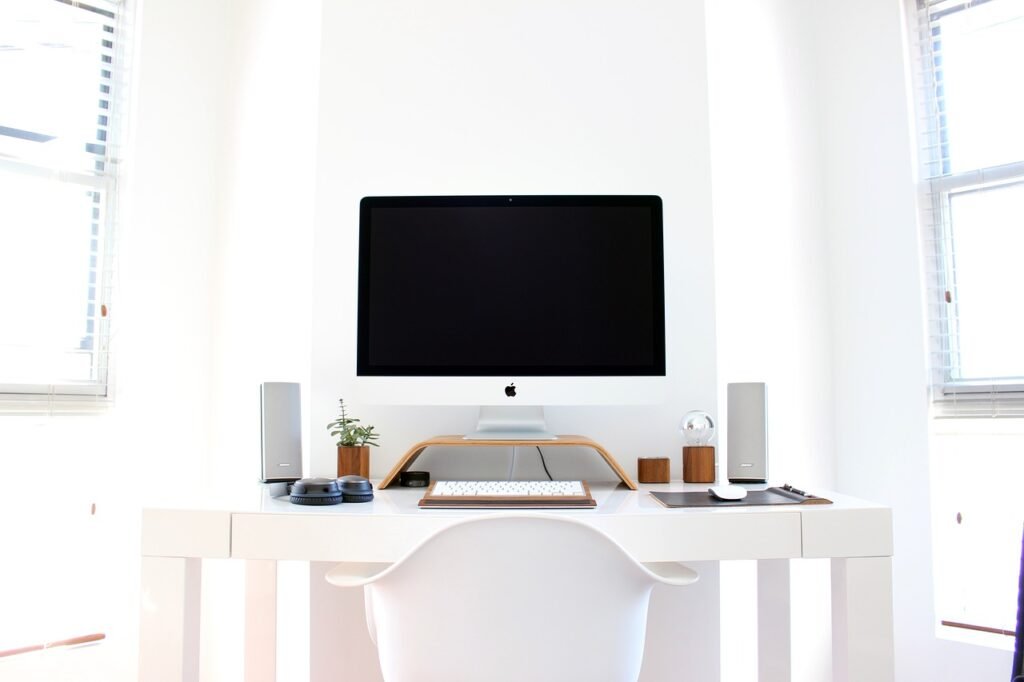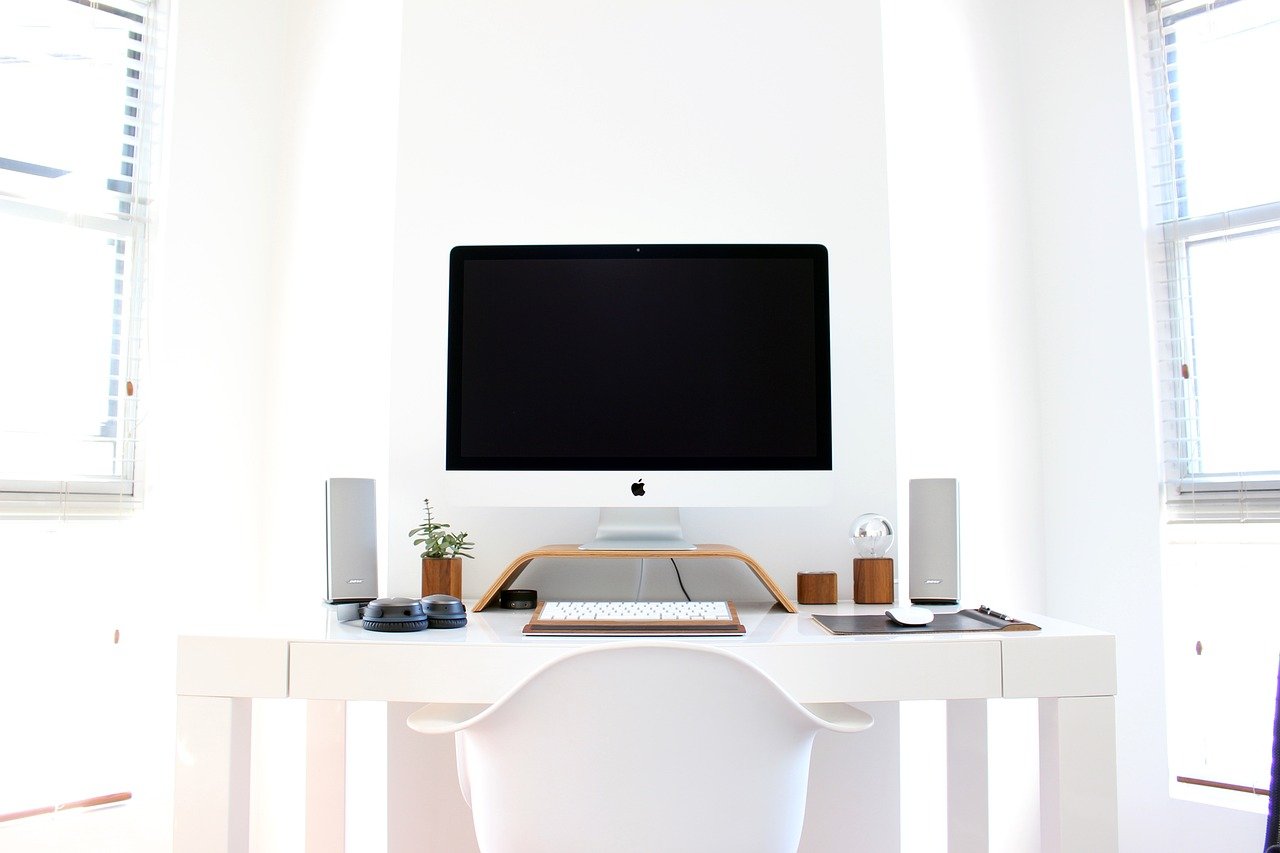Have you ever found yourself overwhelmed by the wide range of laptop sizes available in the market? Choosing the perfect laptop size can be a daunting task, but fear not! This article is here to help you navigate through the options and find the ideal laptop size that suits your needs. Whether you’re a student, a professional, or a casual user, we will explore the factors to consider and provide valuable tips to ensure that your next laptop is the perfect fit for you. So, let’s dive right in and discover the world of laptop sizes together!
Consider the Portability
Weight and Thickness
When choosing a laptop, one of the key factors to consider is its weight and thickness. If you’re someone who is always on the go, attending meetings, traveling, or working from different locations, you’ll want a laptop that is lightweight and slim. A lightweight laptop will be easier to carry around in your bag, reducing strain on your shoulders and back. Additionally, a slim laptop will take up minimal space in your bag, making it more convenient to transport.
Screen Size
Screen size is another important consideration when it comes to laptop portability. The size of the screen will affect both the overall dimensions of the laptop and its weight. Smaller screen sizes, such as 13 or 14 inches, are ideal for those who prioritize portability. These laptops are compact and can easily fit in smaller bags or backpacks. On the other hand, if you require a larger display for tasks like graphic design or video editing, you may opt for a laptop with a screen size of 15 or 17 inches. However, keep in mind that larger screens usually mean a heavier and bulkier laptop.
Keyboard Size
The size of the keyboard is an often-overlooked aspect of laptop portability. If you frequently type for extended periods, having a comfortable and spacious keyboard is crucial. Larger laptops generally have more room for a full-sized keyboard with ample key spacing, making typing more enjoyable and reducing the risk of errors. On the other hand, if you don’t require a full-sized keyboard or prefer a more compact layout, smaller laptops may be a better fit for you. Consider your typing habits and prioritize a keyboard size that matches your needs and preferences.
Evaluate your Usage
Work or Personal Use
Before making a purchase, it’s essential to evaluate your primary use for the laptop. Do you plan to use it for work, personal use, or a combination of both? If you primarily need a laptop for work, consider the specific requirements of your job. For instance, if you work with intensive software or regularly handle large files, you may want a laptop with powerful processing capabilities and ample storage. On the other hand, if you plan to use the laptop primarily for personal use, such as web browsing, streaming, or basic productivity tasks, you may not need the highest-end specifications.
Multimedia or Gaming
If you’re a multimedia enthusiast or avid gamer, your laptop requirements will differ from those of the average user. To ensure a smooth and enjoyable multimedia experience, consider a laptop with a high-quality display and powerful graphics capabilities. Look for laptops with high-resolution screens and dedicated graphics cards that can handle demanding multimedia tasks without lag. Gamers, in particular, should prioritize laptops with dedicated gaming GPUs, ample RAM, and fast processors to ensure optimal gaming performance.
Travel or Desk-bound
Another critical factor to consider is whether you’ll primarily use your laptop while traveling or if it will mostly remain stationary on a desk. If you travel frequently, a lightweight and compact laptop will be your best companion. Look for laptops that are designed with portability in mind, as they will be easier to carry and won’t take up much space in your travel bag. Conversely, if your laptop will primarily be used in one location, you can prioritize features like larger screens and more substantial keyboards, as portability won’t be a major concern.

This image is property of pixabay.com.
Screen Size and Resolution
Standard Sizes and Resolutions
Laptop screens come in various sizes and resolutions, each offering different benefits depending on your needs. The most common laptop screen sizes range from 13 to 17 inches. Smaller screens, around 13 to 14 inches, are generally more portable and compact, while larger screens, such as 15 or 17 inches, offer a more immersive viewing experience. Finding the right balance between portability and screen real estate is crucial.
In addition to size, screen resolution is an important consideration. Higher resolutions, such as Full HD (1920 x 1080) or 4K (3840 x 2160), result in sharper and clearer images. If you plan to use your laptop for tasks that require precise image quality, such as graphic design or video editing, opting for a higher resolution screen may be beneficial. However, it’s important to note that higher resolution screens can consume more power and may impact battery life.
High Definition or 4K
When it comes to screen resolution, you’ll typically come across two main options: High Definition (HD) and 4K. HD screens have a resolution of 1920 x 1080 pixels and offer a good balance between image quality and power consumption. They are suitable for most tasks, including web browsing, document editing, and even watching movies or videos. On the other hand, 4K screens boast an impressive resolution of 3840 x 2160 pixels, providing incredibly sharp and detailed visuals. These screens are particularly fantastic for photographers, video editors, and content creators who require precise color accuracy and exquisite detail.
Keyboard and Trackpad
Standard or Compact Keyboards
The keyboard is one of the primary input methods on a laptop, and finding a comfortable and functional keyboard is essential. Laptops typically come with either a standard or compact keyboard layout. Standard keyboards feature a full-sized layout with distinct keys and a dedicated number pad. If you frequently work with numbers or prefer a more traditional keyboard design, opting for a laptop with a standard keyboard may be the best choice.
Compact keyboards, on the other hand, are becoming increasingly popular due to their space-saving design. These keyboards often sacrifice the dedicated number pad and may have smaller key sizes or different key placements. Compact keyboards are ideal for those who prioritize portability or have limited desk space. If you don’t frequently use the number pad or prefer a more compact layout, a laptop with a compact keyboard may suit your needs.
Ergonomic Design
Ergonomics play a crucial role in ensuring comfort during long hours of typing. When selecting a laptop, consider the design features that contribute to ergonomic comfort, such as an angled keyboard, wrist rest, or keys with proper spacing. Some laptops even have keyboards with adjustable backlighting, allowing you to type comfortably in low-light environments. Prioritizing ergonomic design will reduce the risk of strain or discomfort in your hands, wrists, or back, making your overall computing experience more enjoyable.
Trackpad Size and Sensitivity
In addition to the keyboard, the trackpad or touchpad is another important input tool on a laptop. The size and sensitivity of the trackpad can greatly impact your productivity and ease of use. A larger trackpad provides more room for navigating and performing multitouch gestures, making it easier to control the cursor precisely. Sensitivity is also crucial, as a highly responsive trackpad will allow for smoother and more accurate cursor movement. When purchasing a laptop, consider the trackpad size and read reviews to ensure that it offers a comfortable and responsive user experience.

This image is property of pixabay.com.
Connectivity Options
USB Ports
When it comes to connectivity, USB ports are among the most important features on a laptop. USB ports allow you to connect various peripheral devices, such as external hard drives, printers, smartphones, or cameras. When choosing a laptop, consider the number and type of USB ports it offers. USB Type-A ports are the most common, used for connecting standard USB devices. However, newer laptops may also feature USB Type-C ports, which offer faster data transfer speeds and the ability to connect multiple devices through a single port. Look for laptops with an adequate number of USB ports that match your connectivity needs.
HDMI or DisplayPort
If you plan to connect your laptop to external displays, projectors, or televisions, having an HDMI or DisplayPort is crucial. HDMI ports allow for easy and high-quality audio and video output to external devices. DisplayPort, on the other hand, provides similar functionality but offers additional features like daisy-chaining multiple displays. Depending on your specific requirements, consider whether your laptop should have an HDMI port, a DisplayPort, or both.
SD Card Slot
For photographers, videographers, or anyone who frequently uses memory cards, having an SD card slot on your laptop can be incredibly convenient. SD card slots allow for easy transfer of photos, videos, or other files from your camera or other devices directly to your laptop. Instead of using an external memory card reader, having an SD card slot built into your laptop saves time and reduces clutter. When considering a laptop, check whether it has an SD card slot, and if so, ensure that it supports the type and speed of SD cards you use.
Battery Life
Longevity
Battery life is a crucial consideration, especially if you plan to use your laptop on the go or in situations where power outlets may not be readily available. A laptop with good battery life allows you to work, browse the web, or watch movies without constantly worrying about running out of power. When researching laptops, look for estimated battery life provided by the manufacturer or read reviews from users to get a better understanding of how long the laptop can last before needing to be recharged.
Replaceability
Battery life can decline over time as laptops age, so it’s essential to consider the replaceability of the battery. Some laptops have easily accessible and replaceable batteries, making it convenient to replace a worn-out battery without having to send the entire laptop in for service. On the other hand, some laptops have built-in batteries that cannot be replaced by the user. While these laptops may have sleeker designs, keep in mind that once the battery reaches the end of its lifespan, you may need to take the laptop to a service center for replacement, which can be more cumbersome and costly.

This image is property of pixabay.com.
Processor and Performance
i3, i5, or i7
The processor is the brain of your laptop, responsible for executing tasks and running applications. Intel processors are among the most popular and commonly found in laptops. When choosing a laptop, you’ll typically come across three main options: i3, i5, or i7. Intel Core i3 processors are suitable for basic computing tasks, such as web browsing, document editing, or multimedia streaming. The Core i5 processors offer a balance between performance and power consumption, making them ideal for more demanding tasks like photo editing or moderate gaming. For power users and those who require high performance, the Core i7 processors provide the best performance and are well-suited for tasks like video editing, 3D rendering, or intensive gaming.
RAM Size and Speed
Random Access Memory (RAM) is another crucial component that impacts your laptop’s performance. RAM determines how many tasks your laptop can handle simultaneously and how quickly it can switch between applications. When it comes to RAM, more is generally better. Aim for at least 8GB of RAM for smooth multitasking and comfortable usage. If you frequently work with memory-intensive tasks like video editing or virtual machines, consider getting a laptop with 16GB or more RAM. Additionally, pay attention to the RAM speed, as faster RAM can enhance overall system performance.
Storage Capacity
Storage capacity is an essential consideration for your laptop, as it determines how much data you can store locally. Traditional hard disk drives (HDD) offer larger storage capacities at a lower cost, but they are generally slower in terms of read and write speeds. Solid-State Drives (SSD), on the other hand, provide faster performance, lighter weight, and durability. SSDs are ideal for users who require faster boot times and program loading speeds. Consider the storage capacity you need based on your usage requirements, such as storing a large media library or extensive files. Additionally, some laptops offer the option to have both an SSD and an HDD, providing the benefits of both storage types.
Operating System
Windows
Windows is the most common operating system found on laptops, and it offers a wide range of software compatibility and customization options. Windows laptops are suitable for both work and personal use, and they often come with a variety of pre-installed software and features. If you’re familiar with the Windows interface and prefer the flexibility it offers in terms of software compatibility, Windows laptops may be the right choice for you.
MacOS
MacOS is the operating system developed by Apple and is found exclusively on Mac laptops. MacOS is known for its sleek design, intuitive user interface, and seamless integration with other Apple devices. If you’re already within the Apple ecosystem or prefer the macOS interface, a Mac laptop may be the perfect fit for you. Mac laptops are often favored by creative professionals, as they are well-suited for tasks like graphic design, video editing, and music production.
Linux
Linux is an open-source operating system that offers a high level of customization and flexibility. It is less commonly found pre-installed on laptops but can be installed by the user if desired. Linux is favored by tech enthusiasts, developers, and users who prefer a higher degree of control over their operating system. If you have specific software requirements or prefer the open-source nature of Linux, consider a laptop that is compatible with Linux or a laptop that comes with Linux pre-installed.
Budget Considerations
Value for Money
Setting a budget for your laptop purchase is essential, but it’s equally important to evaluate the value you’ll get for your money. Consider the features, specifications, and build quality of the laptop in relation to its price. Sometimes, paying a bit more upfront for a laptop with higher-quality components or advanced features can result in a better long-term investment. Assess your needs and prioritize features that are important to you, such as portability, performance, or display quality. By finding the right balance between your budget and desired specifications, you can ensure you’re getting the best value for your money.
Long-term Investment
When purchasing a laptop, it’s important to think about its lifespan and how well it will serve your needs over time. Consider the build quality, customer reviews, and the laptop’s ability to accommodate future software or hardware upgrades. While it may be tempting to opt for the most budget-friendly laptop available, a poorly made laptop may require frequent repairs or become outdated quickly. Investing a bit more in a reliable and well-built laptop can save you money in the long run, as you won’t have to replace it as often.
User Reviews and Recommendations
Research Online
Before making a final decision, it’s a good idea to conduct research online to gather user reviews and recommendations. Reading reviews from other users who have purchased or used the laptop you’re considering can provide valuable insights into its performance, durability, and overall user experience. Look for reviews on reputable technology websites or forums where users discuss their experiences with different laptop models. Pay attention to both positive and negative feedback to get a balanced perspective.
Ask for Opinions
Aside from online research, don’t hesitate to ask for opinions and recommendations from friends, family, or colleagues who have experience with laptops. Personal recommendations can be valuable, as they often come from individuals with firsthand knowledge of the laptop’s performance and reliability. Seek out individuals who have similar needs or usage patterns as you and ask for their input on which laptops they would recommend. However, always remember that everyone’s needs and preferences may vary, so it’s essential to weigh these opinions alongside your research and evaluate what aligns with your requirements.
By considering the portability, evaluating your usage, assessing screen size and resolution, keyboard and trackpad features, connectivity options, battery life, processor and performance, operating system, budget, and user reviews, you’ll be well-equipped to choose the perfect laptop that meets your specific needs. Remember to prioritize the features that matter most to you and conduct thorough research to ensure you make an informed decision. With the right laptop at your disposal, you’ll be ready to tackle any task, whether it’s for work, personal use, or entertainment.
